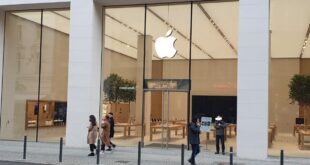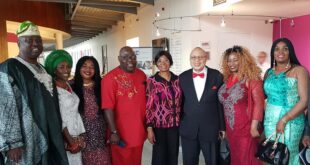By Hardeep Sound, Regional Sales Director: East Africa at SAP
EAST AFRICA, January 12th, 2021,-/African Media Agency(AMA)/- How does the East African region achieve a full economic recovery from the impact of the pandemic while also building toward a more globally-competitive and sustainable future?
As the only region in Africa to avoid a recession in 2020, East Africa is poised for strong growth despite ongoing disruption from the pandemic.
While the exact level of threat posed by the newly-discovered Omicron variant of COVID-19 remains to be seen, the reaction from the global community – travel restrictions, potential lockdowns – could have a severe impact on the region’s economic fortunes.
For organisations and business leaders in the region, the emergence of new unknowns and potential disruptions should not distract from the urgent task of recovery following an immensely difficult near-two year period.
In particular, four key priorities could enable businesses to accelerate their recovery and achieve greater resilience against future disruptions:
Priority One: Digitise with haste
The past two years have marked a radical shift in consumer behaviour. In Kenya, for example, mobile money transfers grew by nearly 63% in 2020 partly due to social distancing measures. Service such as banking has seen accelerated digitisation, ecommerce adoption is growing, and hybrid work models mean most organisations have had to implement new tools to support employees working from home.
For smaller businesses, the impact of the pandemic has been disastrous. A survey undertaken between June and August 2020 found that 62% of SMEs had experienced a fall in demand, cashflow, credit access and inputs. Ninety percent had experienced a fall in sales, and one in five workers in the sector had lost their jobs.
In Kenya, however, SMEs increased their use of digital technology to work around pandemic restrictions. Nearly half of SMEs in the country increased their use of digital platforms, while 13% are investing in digital technologies.
In its most recent East Africa Economic Outlook, the African Development Bank advises that the region should, among other measures, ‘accelerate structural transformation through digitalisation, industrialisation and diversification’.
Effective utilisation of cloud technologies, for example, could enable small and larger enterprises to test new digital channels and business processes that can then be quickly scaled to serve existing customers or reach new ones.
Priority Two: Build back better (and more sustainably)
In the early days of 2020, when countries implemented strict lockdowns and economic activity tapered off, global emissions dropped and, for a moment at least, it seemed as if the pandemic would be a catalyst for sustainability.
However, data indicates that global emissions will continue to grow unless there is an urgent change in policy. The recently concluded COP26 failed to inspire hope that major greenhouse gas emitters would suddenly change course and adopt more sustainable practices.
The changing climate will have a dire impact on East Africa. Recent data indicates that Africa is warming faster than the global average. More heatwaves and cyclones are expected to impact agricultural activities, while potentially driving vast locust swarms to the region, where they cause untold devastation to farmers.
Considering the importance of agriculture to the region’s economic prospects, it is essential that all efforts at economic recovery take into account the potential impact on the climate.
As another of the region’s most important industries, the manufacturing sector – which currently accounts for 8.9% of East Africa’s GDP but is expected to contribute 25% by 2032 – presents a golden opportunity for the region’s innovators to design more sustainable processes.
By ensuring sustainability is embedded in every manufacturing process, East Africa could achieve economic growth while limiting the severity of the climate impact on future generations.
Priority Three: Eliminate uncertainty
Even before the emergence of COVID-19, the world faced unprecedented uncertainty. The continued disruption caused by new digital technologies, the accelerating pace of modern life and a rapidly shifting global political landscape combined to create an environment where change was truly the only constant.
This situation is likely to continue and even become exacerbated by the pandemic, but organisations and decision-makers are not powerless. Organisations that can use data and analytics to gain a real-time, granular view over every aspect of the business can eliminate some uncertainty and improve the accuracy and quality of their decisions.
As the nerve centre of the modern intelligent enterprise, ERP solutions bring a level of clarity and control to decision-makers that is essential to effective leadership.
Integrating emerging technologies such as artificial intelligence and machine learning unlocks further benefits, especially in terms of optimising business processes. Worryingly, the region trails the rest of the world in adoption of emerging technologies, with Kenya ranked highest in a recent global study at 105 out of 158 countries.
As organisations design their post-pandemic business strategies, all efforts must be made to leverage technology as a tool to reduce uncertainty while unlocking opportunities for new gains in efficiency, accuracy and identifying entirely new business models.
Priority Four: Collaborate & innovate
Africa is no stranger to innovation. One study by the WHO found that 13% of all new or modified technology that has been developed in response to the pandemic originated in Africa.
Driving innovation through the effective use of new technologies holds the promise of improving service delivery and boosting productivity. As countries and industries across the region rebuild, understanding the role technology plays in driving innovation is essential.
The region’s outstanding track record in the mobile payments space should serve as inspiration.
Millions of East Africans that were previously excluded from formal banking or credit services today use mobile money services to secure lending opportunities, repay loans and build transaction histories that can unlock access to other formal financial services. Entire ecosystems of products and services have emerged to deliver additional value to mobile money users.
Today, the region is widely acknowledged as the global leader in mobile peer-to-peer finance.
Other areas of innovation include the region’s use of technology to improve agricultural outcomes, for example through the use of SAP’s Rural Sourcing Manager, which gives smallholder farmers weather and market data, improved selling opportunities, and access to new markets.
Using the levers of regional and intra-African cooperation – through the African Continental Free Trade Agreement, or East Africa Community – could further accelerate the pace at which new innovations spread from one country or region to the rest of the continent.
Through ongoing collaboration among African nations, the region and continent could improve the speed at which it rebuilds its economy while unlocking a wealth of new opportunity.
© African Media Agency (AMA)
—-
About SAP
SAP’s strategy is to help every business run as an intelligent enterprise. As a market leader in enterprise application software, we help companies of all sizes and in all industries run at their best: 77% of the world’s transaction revenue touches an SAP® system. Our machine learning, Internet of Things (IoT), and advanced analytics technologies help turn customers’ businesses into intelligent enterprises. SAP helps give people and organizations deep business insight and fosters collaboration that helps them stay ahead of their competition. We simplify technology for companies so they can consume our software the way they want – without disruption. Our end-to-end suite of applications and services enables business and public customers across 25 industries globally to operate profitably, adapt continuously, and make a difference. With a global network of customers, partners, employees, and thought leaders, SAP helps the world run better and improve people’s lives. For more information, visit www.sap.com.
 THE AFRICAN COURIER. Reporting Africa and its Diaspora! The African Courier is an international magazine published in Germany to report on Africa and the Diaspora African experience. The first issue of the bimonthly magazine appeared on the newsstands on 15 February 1998. The African Courier is a communication forum for European-African political, economic and cultural exchanges, and a voice for Africa in Europe.
THE AFRICAN COURIER. Reporting Africa and its Diaspora! The African Courier is an international magazine published in Germany to report on Africa and the Diaspora African experience. The first issue of the bimonthly magazine appeared on the newsstands on 15 February 1998. The African Courier is a communication forum for European-African political, economic and cultural exchanges, and a voice for Africa in Europe.


























